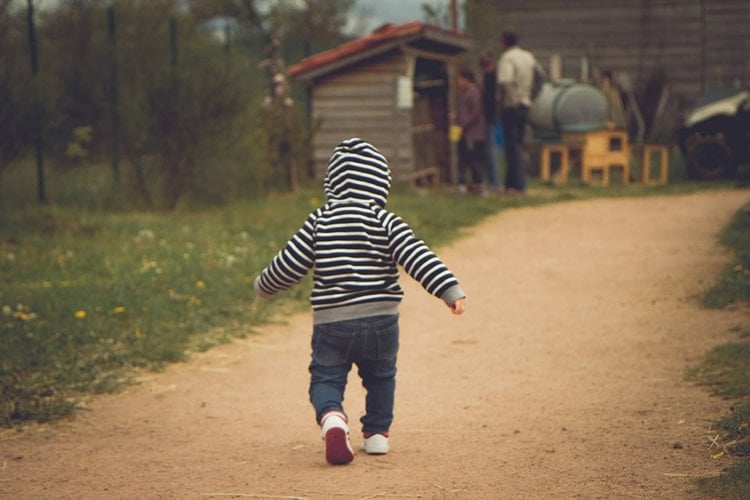Summary: Understanding how babies learn to walk may help to improve rehabilitation treatments for those with cerebral palsy and spinal cord injuries.
Source: Society For Experimental Biology.
Even before they stand up, infants have a rough idea of how to walk; they just need some time to lay down the right neural wiring. Understanding how babies take their first steps can also help us to improve the rehabilitation of patients recovering from spinal cord injury, and children with cerebral palsy.
Anyone who has held a baby near to the floor and seen the child ‘walking’ around has caught a glimpse of our inborn instinct for walking. This primitive stepping reflex is the foundation on which children build an independent walking motion.
Dr Nadia Dominici leads a group at VU University, Netherlands, investigating the neural patterns underlying the development of locomotion. “We look at the emergence of walking behaviours in both human babies and infant animals, as they develop,” she explains. “We are showing that humans and other terrestrial animals learn how to walk in surprisingly similar ways.”
The group has shown that movements such as walking are created from the flexible combination of a small set of groups of muscles that simplify the control of locomotion, called ‘locomotor primitives’. Dr Dominici expands on this, saying: “We found that human babies are born with just two walking primitives: the first directs the legs to bend and extend; the second commands the baby’s legs to alternate — left, right, left, right — in order to move forward. To walk independently, babies learn two more primitives, which we believe handle balance control, step timing and weight shifting.”
These primitives are unexpectedly alike throughout the different animals that the group has studied, as Dr Dominici explains: “Despite all of the differences in body structure and evolution, locomotion in several animal species could start from common primitives, maybe even stemming from a common ancestral neural network.”

This knowledge could be significant in helping patients with walking disabilities recover some mobility. Dr Dominici has already had promising results in rehabilitating injured rats and has bigger plans too. “Results from the rat study show that it’s possible to use neural primitives to improve walking in rats,” she says. “We are now studying the applicability of this method to children with cerebral palsy and adults with spinal cord injuries.”
Source: Jonathan Smith – Society For Experimental Biology
Image Source: This NeuroscienceNews.com image is in the public domain.
Original Research: The findings will be presented at the Society for Experimental Biology Annual Meeting 2016 in Brighton, UK between July 4 – 7, 2016.
[cbtabs][cbtab title=”MLA”]Society For Experimental Biology. “One Small Step for Babies, One Giant Leap for Mankind.” NeuroscienceNews. NeuroscienceNews, 5 July 2016.
<https://neurosciencenews.com/baby-walking-neuroscience-4616/>.[/cbtab][cbtab title=”APA”]Society For Experimental Biology. (2016, July 5). One Small Step for Babies, One Giant Leap for Mankind. NeuroscienceNew. Retrieved July 5, 2016 from https://neurosciencenews.com/baby-walking-neuroscience-4616/[/cbtab][cbtab title=”Chicago”]Society For Experimental Biology. “One Small Step for Babies, One Giant Leap for Mankind.” https://neurosciencenews.com/baby-walking-neuroscience-4616/ (accessed July 5, 2016).[/cbtab][/cbtabs]






